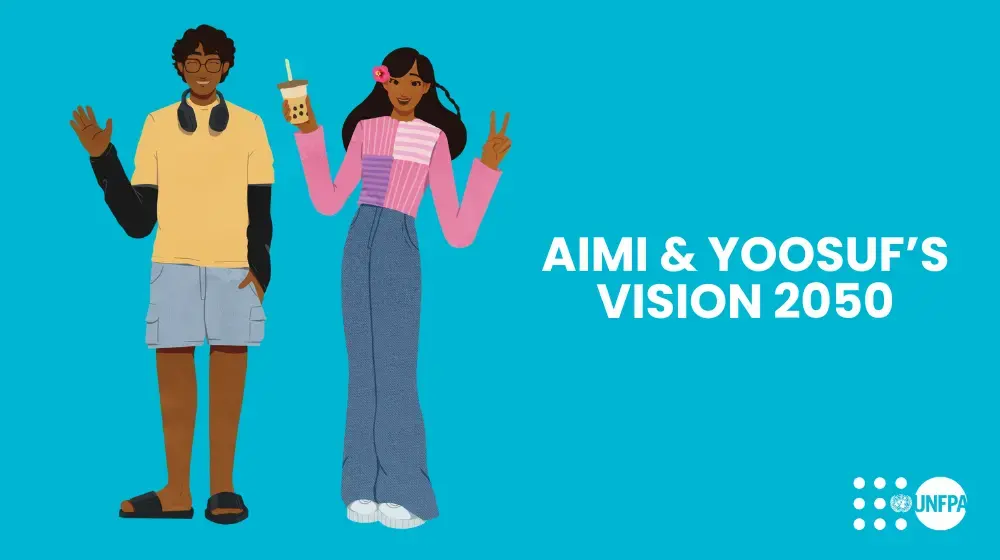A collaboration between UNFPA and the Ministry of Health of Maldives aimed to promote equity in access to SRH services and information. In furtherance of this collaboration, UNFPA is supporting the study of the efficiency of SRH spending, an economic evaluation of benefits against costs of SRH service delivery as planned in the Maldives’ National Reproductive Health Strategy of 2014-2018.
A main goal is to provide the evidence-base, useful for supporting policy decision options for improving health outcomes. The evidence obtained will support the optimization of investments for health for an improved balance of curative and preventive health thereby improving efficiency in public health investments. Sexual and Reproductive Health services facilitate women and couples to have the desired number of children, when they are wanted; to deliver their babies safely and have healthy newborns; and to have healthy sexual lives, free from HIV and other sexually transmitted infections (STIs).
Reduction in rates of unintended pregnancies, lower rates of death and disability among women and newborns, and lower incidence of hiv and other stis are some of the proximate health benefits that accrue from responsive SRH services. Long-term benefits range from greater family savings to stronger national economies. The Maldivian Health Master Plan (2006-2015) and the National Reproductive Health Strategy (NRHS) 2014-2018 prioritized sexual and reproductive health to include, the strengthening of the adolescent-friendly health services in conjunction with the life-skills education in schools and the establishment of services for the health sector response to gender-based violence as stipulated in the Domestic Violence Act (2012).
This study purposed to develop policy options for the Maldives Ministry of Health to determine optimal mix of interventions in response to youth SRH and GBV in the Maldives that delivers the most cost-effective health benefit. The results will inform the implementation of the National Reproductive Health Strategy (NRHS) 2014-2018 by providing costs of different levels of SRH service delivery as planned under the NRHS, compared to the potential benefits of improved SRH service and information, including economic benefits as well as impact on health outcomes (such as lives saved, unwanted pregnancies averted and GBV cases averted). An accounting of monetized resource inputs (costs) and linked outputs (impacts) is essential for this analysis.
A first step was the framing of the conceptual framework which forms the scope of the analysis. The next step was the determination of the list and scope of the key interventions in the Sexual and Reproductive Health programs and Gender-Based Violence programs as prioritized in the Health Master Plan (2006-2015) as well as the National Reproductive Health Strategy (NRHS) 2014-2018. Over 50 evidence-based interventions were grouped into seven broad packages following plausible program structures in Maldives. These broad categories include: family planning, maternal and newborn health, malaria, HIV, immunization, and child health, youth and adolescent health and gender-based violence. We estimated the costs of the six groups of interventions along with their program and systems costs required to deliver these interventions including the potential effects of these interventions using the one health tool which integrates the assessment of cost and health benefits incorporating the interlinked epidemiological models such as the lives saved tool (list), the AIDS impact model for HIV/AIDS interventions, and the famplan model which relates contraceptive use and the total fertility rate (Bongaarts and usaid famplan). An estimated 20% of the data required for a full estimation of the cost and benefits have been so far imputed into model. Efforts are ongoing to improve the robustness of the estimates particularly in the collation of coverage data projections that are critical for the list and other estimation components in the one health modeling tool and the required microcost data. a caveat to the estimates in this report is necessary to the extent that the work is still ongoing to increase the robustness of the analysis. Estimates are merely indicative and may at this time not be construed as near final or final estimates. Ultimately, three strategies were evaluated as options: the base case (counterfactual) scenario representing the srh business as usual; the expanded family planning scenario in which family planning srh services are provided for the reproductive age group in the population - the expanded family planning option and; the adolescent and youth friendly SRH (A&YFSRH) option in which SRH services are limited to the age group between 14 and 30 years old.
The cost and impact of interventions in each of the strategies were estimated annually and projected from 2014 to 2018 representing the current strategic planning year and further projected to 2023. Estimated were cost of infrastructure (hospitals, primary care centers and health post) and their maintenance, service delivery personnel including in schools, health care commodities; medicines, family planning consumables and materials. the impact measure include: number of unintended pregnancies averted due to modern method use; number of maternal deaths averted due to modern method use; number of abortions; number of unsafe abortions; number of safe abortions; number of unsafe abortions averted due to modern method use; and total number of deaths averted.
Estimates showed that between 2014 and 2023, the base case will cost MVR 4156 million and 31 deaths averted, the expanded family planning option will cost mvr 4015 million to avert 32 deaths while the A&YFSRH option will cost MVR 953 million to avert 32 deaths. Cost-effectiveness in the base case scenario was MVR 134 million per death averted, MVR 127 million per death averted for the expanded family planning scenario and MVR 30 million per death averted in the A&YFSRH scenario.
In conclusion, upscaling the adolescent and youth friendly option is estimated to be the most cost-effective strategy to scale up sexual and reproductive health in Maldives. This will involve streamlining the existing health care infrastructure and interventions to more efficiently deliver sexual and reproductive health services and actively targeting youths and adolescents. Adolescent and youth SRH requires that services are provided in manners acceptable and attractive to youths. Training of school counselors to provide counseling services to youth and adolescents and retraining health care providers to better provide srh services are potential strategies to upscale adolescent and youth SRH in Maldives. It is recommended that this exploration should be further pursued with exploration to improve the data accessibility and quality in the future. It is envisaged that circulation of this report might motivate sufficient interest among stakeholders such that would improve readiness to provide access to relevant data.





